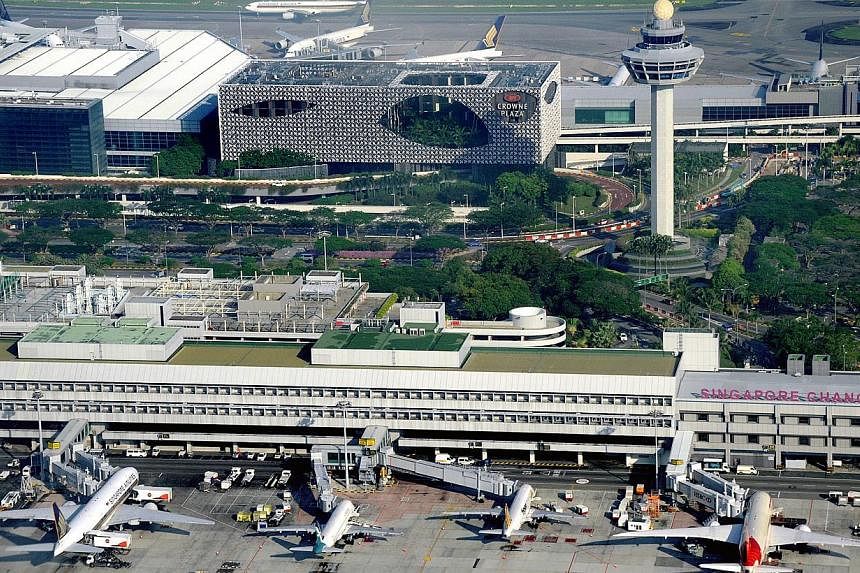The year is shaping up to be one of Changi Airport's toughest in the past decade, with total passenger numbers expected to increase by just about 1 per cent over last year's 53.7 million, industry experts forecast.
With Singapore carriers and many other regional airlines focused on profits rather than expansion, the situation is unlikely to improve much next year, they add.
Except for 2009 when air traffic was hit by a global financial crisis, Changi has never seen growth of under 2.7 per cent in the past decade.
Between January and September this year, the airport handled more than 40 million passengers, 0.9 per cent more than the corresponding period last year.
The growth slowdown is due to several reasons including prolonged weakness in the demand for air travel to and from two of Changi's top five markets - Thailand and China.
Passenger traffic to and from China has dipped for 10 of the past 12 months, while the number of people travelling to Thailand from Singapore has fallen for at least 11 consecutive months now.
The decline can be attributed to political instability in Thailand, new travel laws in China and the impact of the disappearance of Malaysia Airlines Flight MH370 in March on travel to the region, said Mr Lim Ching Kiat, Changi Airport Group's senior vice-president for market development.
Imposed about a year ago, new tourism laws in China that prohibit travel agencies from offering below-cost packages that usually come with compulsory shopping stops have reduced the number of outbound travellers.
After growing aggressively in the past few years, low-cost carriers like Tigerair and Jetstar, which have accounted for the bulk of Changi Airport's growth, have also been scaling back.
This is due to overcapacity, with airlines adding more seats than demand can soak up, pushing down fares and yields.
The challenges have affected not just Changi but other South-east Asian airports as well, said analyst Brendan Sobie from the Centre for Asia Pacific Aviation.
For example, Kuala Lumpur International Airport, which grew a "staggering" 19 per cent last year, has seen a "significant" slowdown since May. Its traffic dipped below last year's levels between July and last month.
Thailand has also been hard hit.
Mr Sobie said: "All of these show conditions across South-east Asia have become challenging this year.
"I don't see much, if any, growth for Changi next year as well. We could potentially see more growth in 2016 although that's almost impossible to predict at this point."
To stay competitive, Changi, which is a "relatively expensive airport" in the region, will have to keep on eye on its costs, he said.
Mr Lim said the airport is "acutely aware that the current industry environment is difficult".
Measures have been introduced to support partners including airlines, he added.
In June, for instance, Changi announced a $100 million aid package, which includes rebates for aircraft parking and aerobridge fees.
Despite the challenges, there are opportunities for Singapore's travel and tourism sector, said Dynasty Travel's spokesman Alicia Seah.
"In markets like Indonesia, Vietnam and the Philippines, official data shows that just under 5 per cent of the population are travelling," she said.
"With growing affluence and connectivity from Singapore to regional cities, we foresee that there is great potential that Singapore can continue to tap."

